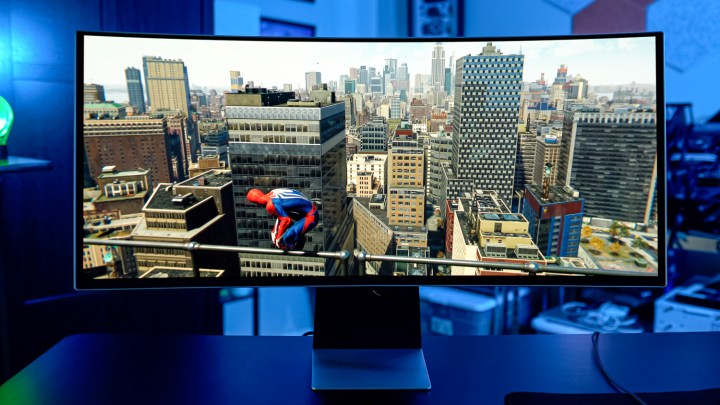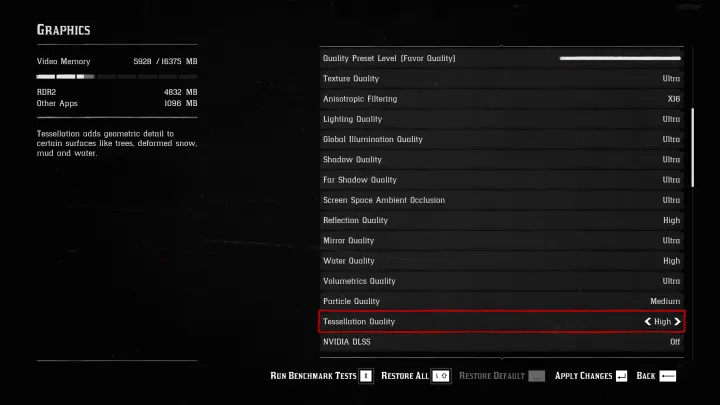Although I started gaming at the age of 4 on a Super Nintendo, I’ve spent most of my life as a PC gamer. I have nothing against consoles — I own a couple, still — but nothing beats a gaming desktop for me. I love gaming on a PC for things like versatility, upgrade potential, and compatibility with many different games. But PC gaming is far from perfect, even in 2024.
Even with more PC gamers than ever before, issues persist in PC releases. Many of these boil down to the fragmentation of game graphics, and how consoles tend to just work whereas PC gamers have to fiddle with the settings before everything looks good. Here are a few of the PC gaming annoyances that we all have to contend with, and that I hope get addressed in the future.
Resolution woes

It’s surprising how many AAA titles handle resolution and scaling in a weird way. By default, if you run your monitor at its native resolution, the game should detect it and adapt to it. That’s how it is on consoles.
First of all, that’s not always the case for PC gamers. Even with a 1440p or 4K monitor, you might find titles that start up at 1080p and require you to dig into the settings to adjust to your native resolution. Gamers with ultrawide monitors have a whole new struggle to deal with, as many titles aren’t optimized for such resolutions.
All of the above isn’t even the most annoying thing about resolutions in PC gaming — it gets worse. The problem rears its ugly head if you reduce your resolution in Windows. Let’s say you have a 4K monitor, but you scale down to 1080p to run a really demanding game. Some titles don’t take kindly to that, and instead of adjusting to your Windows resolution, they become unplayable.
Everything gets cropped, and even if you wanted to fix the settings, you might not be able to find the right toggle because of how wonky the resolution is. This can happen in many games, such as Cyberpunk 2077, and in this day and age, it probably shouldn’t. It’d be nice if every game just scaled up or down based on your resolution.
The first time you run a game can be tricky, too. I’ve had this problem in games like Cyberpunk 2077 or Red Dead Redemption 2 where the game automatically assumed I had a different resolution, presumably based on my GPU. Although I have an RTX 4080, which is a 4K gaming card, I have a 1440p monitor. Meanwhile, the game auto-adjusted the resolution to 4K. As a result, I could only see the upper-left 60% of the game, meaning that vertically, a huge chunk of it was missing. Horizontally, the rest of it bled out onto my second screen. It’s a minor thing, but it wasn’t pretty, and it made navigating the menus a headache.
Sometimes, you may not even be able to see your chosen resolution as an option in the game without going the extra mile and finding the .ini file. For example, in Returnal, the resolution will top out at 1440p, so if you’re using a 4K monitor, you’re out of luck — it’s time to do some digging on the PCGamingWiki to find an .ini file to adjust.
The many different names for upscaling

By now, it’s widely known that upscaling is a good thing in games. Whether Nvidia DLSS or AMD FSR, or even Intel XeSS, upscaling can help improve performance or visuals. The problem is that actually finding out which option to use can get tricky in some games, all because “upscaling” comes with so many different names.
Take Cyberpunk 2077, for example. The game refers to the setting as Resolution Scaling, but pretty much every game I’ve checked calls it something different. In World of Warcraft, it’s Resample Quality. Horizon Zero Dawn offers perhaps the most straightforward option and just calls it Upscale Method. But that’s not all there is to it.
Beyond just making the choice between FSR and DLSS (if it’s even an option) and then narrowing it down to a specific version, some games give you a lot of freedom with what you want to do with these upscaling technologies. Black Myth: Wukong comes with a Super Resolution scale that lets you pinpoint the exact balance between performance and quality. Other titles come with presets, which is still fine — you get to choose what to focus on.
On the other hand, many titles, like the aforementioned World of Warcraft, only let you toggle it on or off, and you never quite know what it is that they’re doing. Further, a game like Diablo IV will straight up block other upscaling options depending on your graphics cards.
Entrenched PC players know what to do in the graphics menu, but the dynamic resolution available in most console games means you can sit down and start playing right away. On PC, you have to settle for a preset, continually tweak a slider, and pray that there’s an automatic option.
Too much is never a good thing

Graphics settings are a good thing in PC games, but some titles take the idea way too far. While it’d be nice to be able to control upscaling a bit more in many games, there are also titles that are guilty of having far too many options — many of which are confusing to most gamers.
Take Red Dead Redemption 2, for example, or Call of Duty: Modern Warfare III; but in all honesty, this applies to most modern AAA games. You have settings for textures, shadows, and the like, but things can get complex quickly. What’s the difference between Mirror Quality and Reflection Quality in Red Dead Redemption 2? Are Persistent Effects killing my performance in Modern Warfare III, and what even those effects in the first place?
Of course, there’s a workaround for this — most games just let you choose from a number of graphic presets and then adjust all the smaller options for you based on your pick. The thing is that some settings can have a major impact on performance, and others barely make a dent, so it’d still be nice to know which ones to tune in order to improve your frames per second (fps). No such luck — a million different graphics settings it is.
PC games have gotten better about explaining what settings do and how much they affect performance. Still, we haven’t quite reached that happy middle ground where each setting has a meaningful impact on performance, and in the case of games like the annual Call of Duty release, the graphics menu has only ballooned with time.
What’s the difference?

Picking up from my previous point, do you know what else I wish was more normalized in PC gaming? Previews of what each graphics setting does. Maybe it’s just me, but some settings have such a subtle impact on visuals that I really can’t tell what’s changed — but that doesn’t mean they have no impact on performance.
For gamers who don’t know what each setting does by heart, choosing the right option isn’t intuitive. Some games, like Returnal, come with live previews when you’re tweaking the settings, and that’s exactly what I’d love to see more of. Other titles show images, which is worse, but still fine. But so many games show nothing at all and expect you to figure out whether this ambiguously named setting made much of a difference or not, and whether it’ll suddenly knock your frame rate down by a third.
Another thing is that some settings, while crucial to gameplay, take a big hit if you lower your graphics preset. For example, choosing a lower preset in World of Warcraft affects things like projected textures and particle density. With those turned down low, you might miss many crucial mechanics during combat — but you need to know this in order to pinpoint why you’ve been caught standing in fire for the third time in a row.
With time, most PC gamers learn what settings do, pinpointing the difference between, say, using another Call of Duty example, static reflections and screen space reflections. Even with that knowledge, there’s no telling what the visual impact will be unless you take a few screenshots and compare them side-by-side. Games can do that hard work for you, and they should.
To restart or not to restart

Call me nitpicky, but I enjoy a cohesive and seamless user experience in games and their menus. I believe that navigating the settings shouldn’t be a nuisance — it should be as smooth as possible so that you can jump right into the gameplay. Few things annoy gamers as much as delays when they want to start playing, and those are still a common thing in graphics settings on a PC.
Many games will ask you to restart the title when you change some of the settings. That’s fair — I get that that’s a necessity sometimes. Some of the most common culprits here include turning on things like DLSS frame generation or ray tracing. Cyberpunk 2077, for instance, tells you that some settings will require a restart — but doesn’t give you the option to immediately do so. You have to exit the settings and restart.
But then there are the games that don’t tell you that you need to restart, or worse, tell you that some settings require a restart without pinpointing which ones. Cyberpunk 2077 is guilty of this, as is the recently released Black Myth: Wukong. A restart alone isn’t a problem, but trying to drill down when you need to restart and when you don’t is a hassle.
PC gaming could be more streamlined

I love gaming on a PC for how much you can do with a desktop, or even a laptop. If I had a PlayStation or an Xbox, I’d be limited to titles that are available on those platforms, and I couldn’t also use them for work. That’s never a problem on a PC.
With a PC, I have access to a vast catalog of games, including ancient oldies that are now only available on emulators. Not everything ever makes it to PC — Nintendo is notorious for this, hence why I own the Switch — but many games eventually do, and that’s enough for me. The flexibility, superior performance, and upgradeability are all reasons why I’m one of those people who always choose a PC in the endless debate of desktop versus console.
I still wish PC gaming came without these annoying caveats, though. Console gaming is almost always as easy as just downloading the game and starting it. But because PCs give you so many more options, they also can be much more of a hassle.
I can’t help but feel that some of the above annoyances could be fixed, but even if they never will be, I’d still choose my PC any day of the week. Still, I could never begrudge anyone who would rather just have a console and let everything just work without user input.





